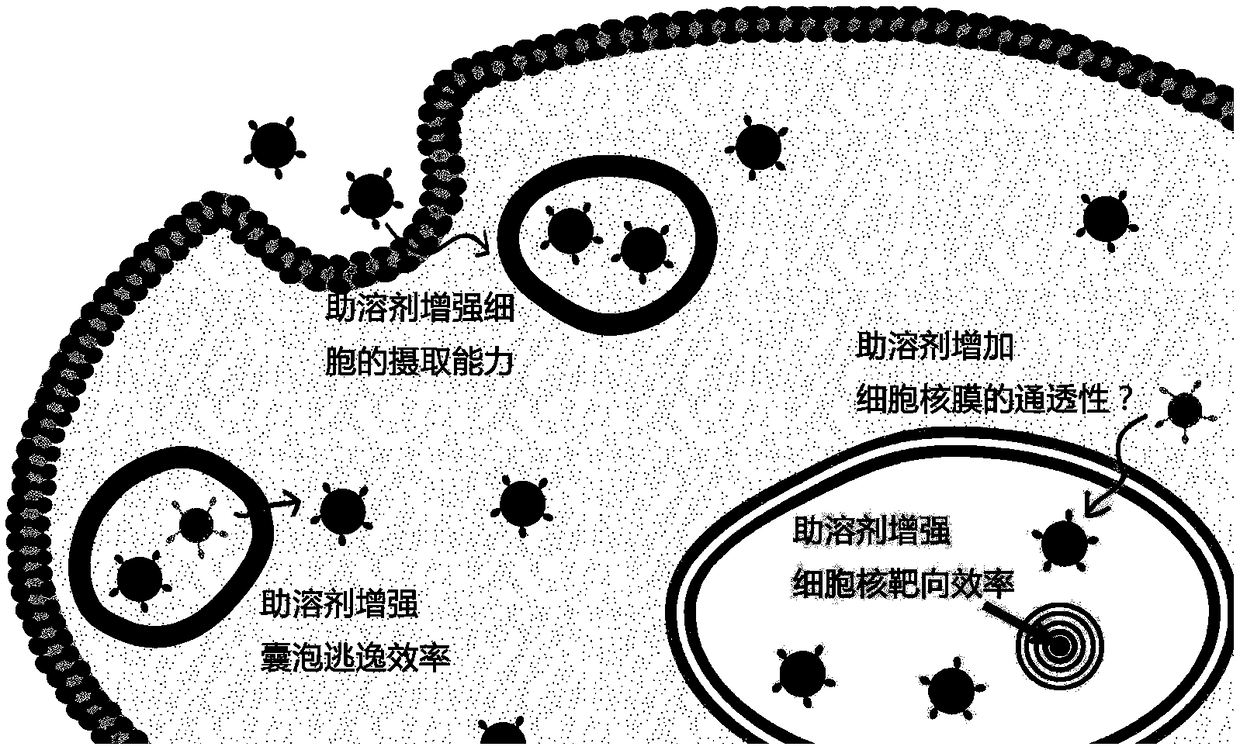Method for promoting targeting conveying effect of nanometer substance in living cells
A live cell, targeted technology, applied in the field of biomedicine, which can solve the problems of poor efficiency and high cytotoxicity
- Summary
- Abstract
- Description
- Claims
- Application Information
AI Technical Summary
Problems solved by technology
Method used
Image
Examples
Embodiment 1
[0042] Example 1 The method and effect of DMSO on TAT-QD increasing target in cervical cancer tumor cells.
[0043] The specific operation steps are as follows: after the HeLa cells adhere to the wall, normal cell culture medium (DMEM medium containing 10% fetal bovine serum) and cell culture medium containing 1% DMSO in volume concentration are respectively selected. The TAT-QDs were dispersed in the above two culture solutions at the same concentration. After incubation with the cells in an incubator (37°C, 5% CO 2 ) after co-cultivation for the indicated time, observed under confocal laser microscope.
[0044] In order to colocalize the relative positions of organelles and quantum dots, we stained the nucleus with the nuclear dye Hoechst 33342, and stained the cell membrane and inclusion bodies with DiO. Cell nuclei staining method: Remove the cell culture medium and wash once with PBS. Add 600 μL of Hoechst 33342 staining solution (dissolved in DMEM) at a concentration ...
Embodiment 2
[0047] Embodiment 2 A variety of cosolvents can improve the targeting effect of TAT-QD
[0048] The specific operation is: after the HeLa cells adhere to the wall, select normal cell culture medium (DMEM medium containing 10% fetal bovine serum) and cells containing a cosolvent (DMF, ethanol, acetone or tetrahydrofuran) with a volume concentration of 1%. culture medium. The TAT-QDs were dispersed in the above two culture solutions at the same concentration. After incubation with the cells in an incubator (37°C, 5% CO 2 ) after co-cultivation for 24 hours, observed under confocal laser microscope. In order to co-localize the relative positions of organelles and quantum dots, we stained the nuclei with the nuclear dye Hoechst 33342.
[0049] Such as Figure 4 It shows that, like DMSO, TAT-QD can escape from the vesicles and enter the nucleus with the participation of DMF, ethanol, acetone or THF, but the effect of THF is slightly worse than that of other co-solvents. . It ...
Embodiment 3
[0050] Example 3 The targeting effect of TAT-QD improved by cosolvent can be realized in various cell types
[0051] The specific operation steps are: select human breast cancer cells (MCF-7), human liver cancer cells (Hep G2) and human lung cancer cells (A549), and after the cells adhere to the wall, select normal cell culture medium (containing 10% fetal bovine Serum culture medium) and cell culture medium containing 1% DMSO in volume concentration. The TAT-QDs were dispersed in the above two culture solutions at the same concentration. After incubation with the cells in an incubator (37°C, 5% CO 2 ) after co-cultivation for the indicated time, observed under confocal laser microscope. In order to co-localize the relative positions of organelles and quantum dots, we stained the nuclei with the nuclear dye Hoechst 33342.
[0052] Such as Figure 5 It was shown that, like HeLa cells, TAT-QD could escape from the vesicles and enter the nucleus with the participation of coso...
PUM
| Property | Measurement | Unit |
|---|---|---|
| particle diameter | aaaaa | aaaaa |
Abstract
Description
Claims
Application Information
 Login to View More
Login to View More - R&D
- Intellectual Property
- Life Sciences
- Materials
- Tech Scout
- Unparalleled Data Quality
- Higher Quality Content
- 60% Fewer Hallucinations
Browse by: Latest US Patents, China's latest patents, Technical Efficacy Thesaurus, Application Domain, Technology Topic, Popular Technical Reports.
© 2025 PatSnap. All rights reserved.Legal|Privacy policy|Modern Slavery Act Transparency Statement|Sitemap|About US| Contact US: help@patsnap.com



